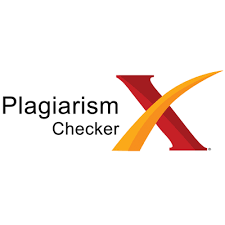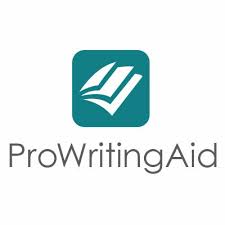CALISTUNG STUDIO TO IMPROVE LITERACY AND NUMERACY OF JUNIOR HIGH SCHOOL STUDENTS
DOI:
https://doi.org/10.30740/jee.v8i1.257Keywords:
Calistung studio, Literacy, NumeracyAbstract
References
Amri, S., & Rochmah, E. (2021). Pengaruh Kemampuan Literasi Membaca Terhadap Prestasi Belajar Siswa Sekolah Dasar. EduHumaniora | Jurnal Pendidikan Dasar Kampus Cibiru, 13(1), 52–58. https://doi.org/10.17509/eh.v13i1.25916
Chen, X., Zhou, J., Wang, J., Wang, D., Liu, J., Shi, D., Yang, D., & Pan, Q. (2022). Visualizing Status, Hotspots, and Future Trends in Mathematical Literacy Research via Knowledge Graph. Sustainability (Switzerland), 14(21). https://doi.org/10.3390/su142113842
Dahlan, J. A., Juandi, D., Yogaswara, A., & Kurniasih, D. (2023). Developing mathematics teaching materials based on numeracy literacy for junior high school mathematics teachers in West Bandung Regency. Transformasi: Jurnal Pengabdian Masyarakat, 19(2), 237–249. https://doi.org/10.20414/transformasi.v19i2.8294
Haroky, F., Nikmah, S., Wilujeng, I., Jumadi, & Kuswanto, H. (2019). Android-Assisted Physics Comic Learning to Train Students’ Conceptual Understanding of Newton’s Gravity. Journal of Physics: Conference Series. https://doi.org/10.1088/1742-6596/1233/1/012045
Khoirunnisa, S., & Adirakasiwi, A. G. (2023). Analisis Kemampuan Literasi Numerasi Siswa Smp Pada Era Merdeka Belajar. Jurnal Pembelajaran Matematika Inovatif, 6(3), 925–936. https://doi.org/10.22460/jpmi.v6i3.17393
Mayadiana Suwarma, D., Munir, M., Ayu Wijayanti, D., Pandapotan Marpaung, M., Weraman, P., & Putu Agus Dharma Hita, I. (2023). Pendampingan Belajar Siswa untuk Meningkatkan Kemampuan Calistung dan Motivasi Belajar. Communnity Development Journal, 4(2), 1234–1239.
Mellyzar, M., Novita, N., Muliani, M., Marhami, M., & Retnowulan, S. R. (2023). the Literacy and Numeracy Ability Profile Which Are Viewed From Minimum Assessment Components (Akm). Lantanida Journal, 11(2), 168. https://doi.org/10.22373/lj.v11i2.19866
Mu;arif, A., Irvan, & Nasution, M. D. (2023). Pengaruh Model Problem Based Learning Terintegrasi. MAJU:Jurnal Ilmiah Pendidikan Matematika, 10(2), 10–16.
Nurcahyono, N. A., Kunci, K., Literasi, K., Numerasi, K., & Pembelajaran, M. (2023). Peningkatan Kemampuan Literasi Numerasi Melalui Model Pembelajaran. HEXAGON: Jurnal Ilmu dan Pendidikan Matematika. Ilmu Dan Pendidikan Matematika, 1(1), 2988–7763. https://doi.org/10.33830/hexagon.v1i1.4924
Pratama, M. Y., & Khotimah, K. (2024). Perancangan dan Implementasi Game Edukasi Tebak Gambar dan Angka Sebagai Media Pembelajaran Calistung ( Baca , Tulis , dan Berhitung ) Taman Kanak-Kanak Berbasis Android. 5.
Sinambela, S. M., Lumbantobing, J. N. Y., Saragih, M. D., Mangunsong, A. F., Nisa, C., Simanjuntak, J. P., & Jamaludin, J. (2024). Kesenjangan Digital dalam Dunia Pendidikan Masa Kini dan Masa Yang Akan Datang. Jurnal Bintang Pendidikan Indonesia, 2(3), 15–24. https://ejurnal.stie-trianandra.ac.id/index.php/JUBPI/article/view/3003
Suryadi, A., & Husna, S. (2022). ASESMEN DIAGNOSTIK MAKRO PERSIAPAN PENERAPAN KURIKULUM MERDEKA MTsN 28 JAKARTA. Jentre, 3(2), 74–89. https://doi.org/10.38075/jen.v3i2.273
Wulan, E. P. S., & Samosir, S. E. (2022). Peningkatan Kemampuan Literasi dan Numerasi Peserta Didik Melalui Program Kampus Mengajar Angkatan IV Di SMP Swasta Darma Medan. Jurnal Pendidikan Dan Konseling (JPDK), 4(6), 12085–12090. https://doi.org/10.31004/jpdk.v4i6.10377









